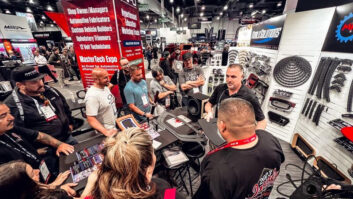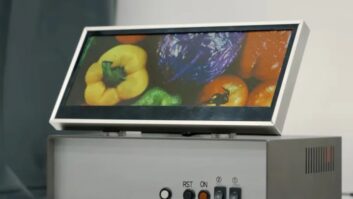NEW YORK
– The repercussions of the Japanese earthquake and tsunami for technology manufacturers will be widespread, according to a report by Gartner.
While the technology industry’s problems created by the triple shock of a massive earthquake, the subsequent tsunami and the ongoing nuclear crisis pale in comparison to the human suffering being endured by the Japanese people, Gartner said the challenges to the CE business will range from increased memory prices, disruptions in the semiconductor production, and lower domestic Japanese demand for finished goods.
The area most impacted so far is in the memory supply chain. Japan makes about 50 percent of the silicon wafers used in silicon production and 90 percent of the bismaleimide triazine (BT) resin that is used to make semiconductor packaging substrates and some circuit boards. This will directly impact several products, including cellphones, PC chipsets and graphic processors.
Toshiba reported on March 31 it will re-open its chip plant in the Iwate prefecture on April 11. It has been shuttered since the disaster struck.
Mitsubishi Gas Chemical is the primary BT resin producer and has shut down its factories, and Gartner expects this to create spot shortages of finished electronics, but not a complete shutdown of any specific industry. However, the final impact will depend upon general inventory levels maintained by each manufacturer. Mitsubishi is supposed to have 25 percent of its capacity up and running in several weeks.
IDC’s Michael Palma, research manager, consumer device semiconductors and electronic manufacturing services, said shifting some production out of Japan may be possible, but this is less likely with materials. Some of the products most impacted will be media tablets, high-end DTVs and high-end d-SLR cameras due to the damage incurred to their respective supply chains.
“As for semiconductor production, it is less certain. Replacements for the Renesas fab capacity will prove difficult since foundries are already running at high capacity. The impact appears to be less for other companies. Also, advanced materials for LCDs are also going to be harder to replace or find substitutes,” said Palma.
The impact on lithium-ion battery production is also still unknown. As of March 25, Sony’s two battery plants in Fukushima were still closed, while a third in Tochigi has re-opened.
Once again, the region is home to about 50 percent of the chemical production needed to make ion batteries, so any halt will cause problems later this year, Gartner said. For the time being, the supply situation should be stable due to a two-month supply of batteries now available, but Gartner said Taiwanese manufacturers are worried about what will happen during the next quarter to their laptop, tablet PC and mobile phone production when supplies dip.
Japanese purchases of electronic gear will likely take a severe short-term hit as the nation focuses on rebuilding the destroyed region. However, Gartner believes the replacement demand for various products will spur growth. The Japanese market, for example, is responsible for about 4.2 million PC purchases per year and it accounts for almost 2 percent of the worldwide mobile phone shipments.
One of the lone bright spots, according to Gartner, concerns NAND memory production.
NAND manufacturing was temporarily disrupted at two joint Toshiba SanDisk factories located in Yokkaichi, which are about 400 miles from the quake’s epicenter and 300 miles from the damaged Fukushima nuclear power plant.
Other memory plants, including Elpida’s in Hiroshima and Mircon’s in Nishiwaki, are operating. These plants also operate on a separate power grid and are not being affected by the rolling power outages in Tokyo and the northern portions of the country.
Fujitsu’s NOR (non-volatile) flash plant in Aizu Wakamatus- shi is located much closer to the troubled regions, just 60 miles from the damaged reactors. This plant has been damaged, and the company has not stated when it will resume production.
Texas Instruments also has a NOR factory in the same region. It was initially shut down, but has since restarted operations and TI expects it to be fully up to speed by mid-April, Gartner said.
Before the disaster, the two plants accounted for 16 percent of the world’s NOR flash capacity.













